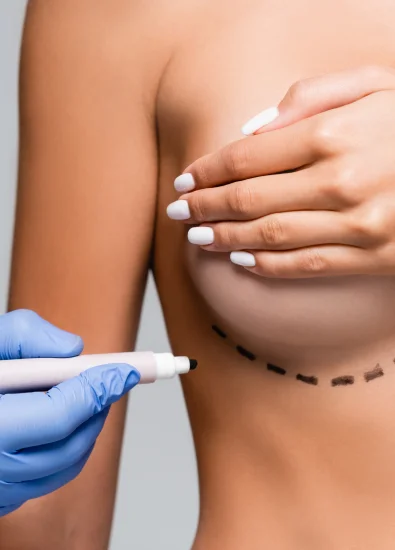Lifting de cejas en Almería
Cirugía de lifting de cejas
El lifting de cejas incluye varias técnicas diseñadas para elevar las cejas cuando han descendido, restaurando así su posición deseada. La ubicación de las cejas influye significativamente en la expresión facial, por lo que este procedimiento revitaliza la mirada y mejora un aspecto cansado, triste o envejecido.
A menudo, se sugiere combinar el lifting de cejas con una blefaroplastia de párpados para obtener un rejuvenecimiento más integral de la mirada.
Primera valoración gratis
Recupera tu confianza y mejora tu apariencia con un tratamiento impecable plenamente adaptado a ti.
Visítanos para una primera consulta gratuita y transforma tu cuerpo para verte más joven y segura, volviendo a tu rutina lo antes posible.
La experiencia de la Dra. Ana Moreno
Todas nuestras intervenciones quirúrgicas se realizan en centros hospitalarios, ofreciendo total garantía con respecto al equipamiento de los quirófanos y a la atención de cualquier complicación que se pudiera presentar.
Buscamos que consigas un resultado que destaque tu belleza, con un tratamiento lo más cómodo para ti y adaptado a tus expectativas.
La doctora Ana Moreno cuenta con una experiencia como médico especialista en Cirugía Plástica, Estética y Reparadora desde hace casi 30 años.
0 +
Cirugías0 +
Pacientes0 +
Tratamientos0 +
Años de experienciaProcedimiento del lifting de cejas
El cirujano realiza pequeñas incisiones ocultas en el cuero cabelludo, justo por encima de la línea del cabello o en las arrugas naturales de la frente.
A través de estas incisiones, se levantan y ajustan los tejidos subyacentes para reposicionar las cejas en una posición más elevada y rejuvenecida.
Si es necesario, se elimina el exceso de piel para lograr un aspecto más tenso y joven. Las incisiones se cierran con suturas finas para minimizar las cicatrices visibles.
Este procedimiento no solo mejora la apariencia de las cejas, sino que también tiene un impacto positivo en la expresión facial general, ofreciendo un resultado natural y armonioso que realza la belleza del rostro.
Ventajas del aumento de senos
¿Cómo será el proceso?
Primera visita
Conversaremos sobre tus objetivos y expectativas sin compromiso.
Valoración
Evaluaré tu estado físico e historial médico para definir el tratamiento a seguir.
Preoperatorio
Te daré indicaciones y realizaré pruebas médicas antes de la intervención.
Intervención
Realizaré la cirugía con técnicas avanzadas y seguras.
Postoperatorio
Te proporcionaré cuidados detallados para una rápida recuperación.
Revisiones
Programaré citas para evaluar tu progreso y mantener los resultados.
Primera visita
Conversaremos sobre tus objetivos y expectativas sin compromiso.
Valoración
Evaluaré tu estado físico e historial médico para definir el tratamiento a seguir.
Preoperatorio
Te daré indicaciones y realizaré pruebas médicas antes de la intervención.
Intervención
Realizaré la cirugía con técnicas avanzadas y seguras.
Postoperatorio
Te proporcionaré cuidados detallados para una rápida recuperación.
Revisiones
Programaré citas para evaluar tu progreso y mantener los resultados.
